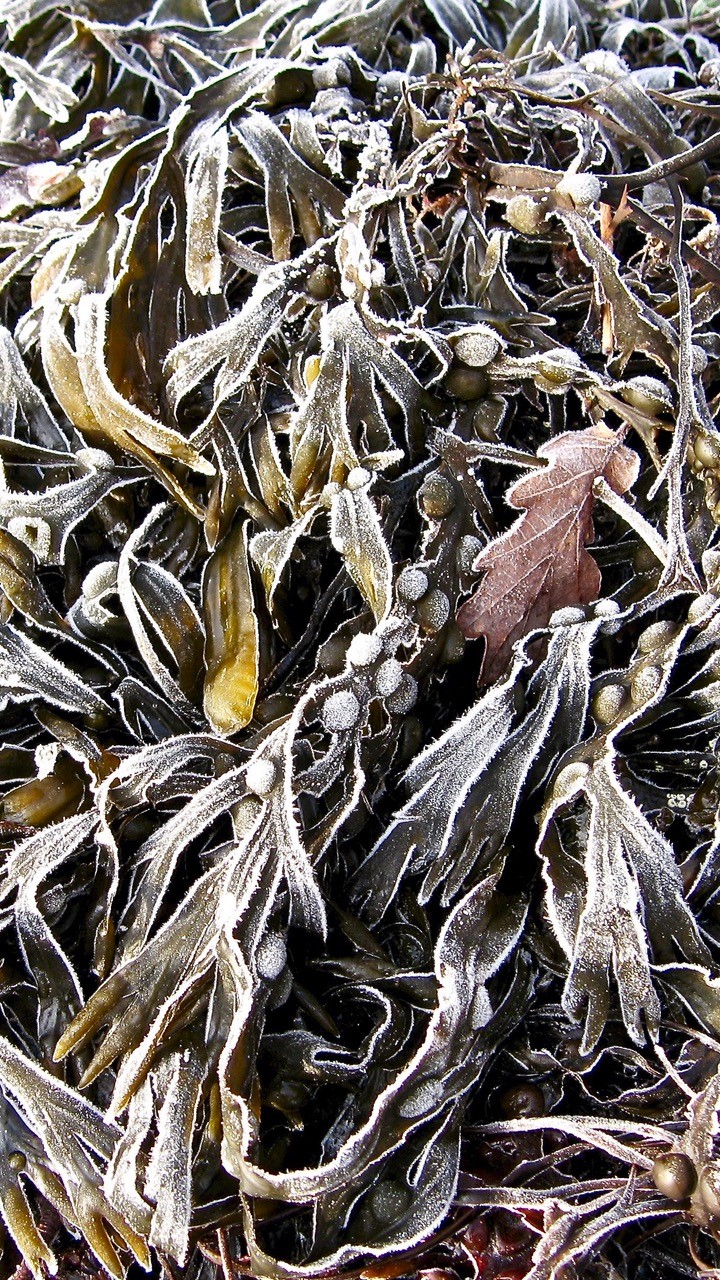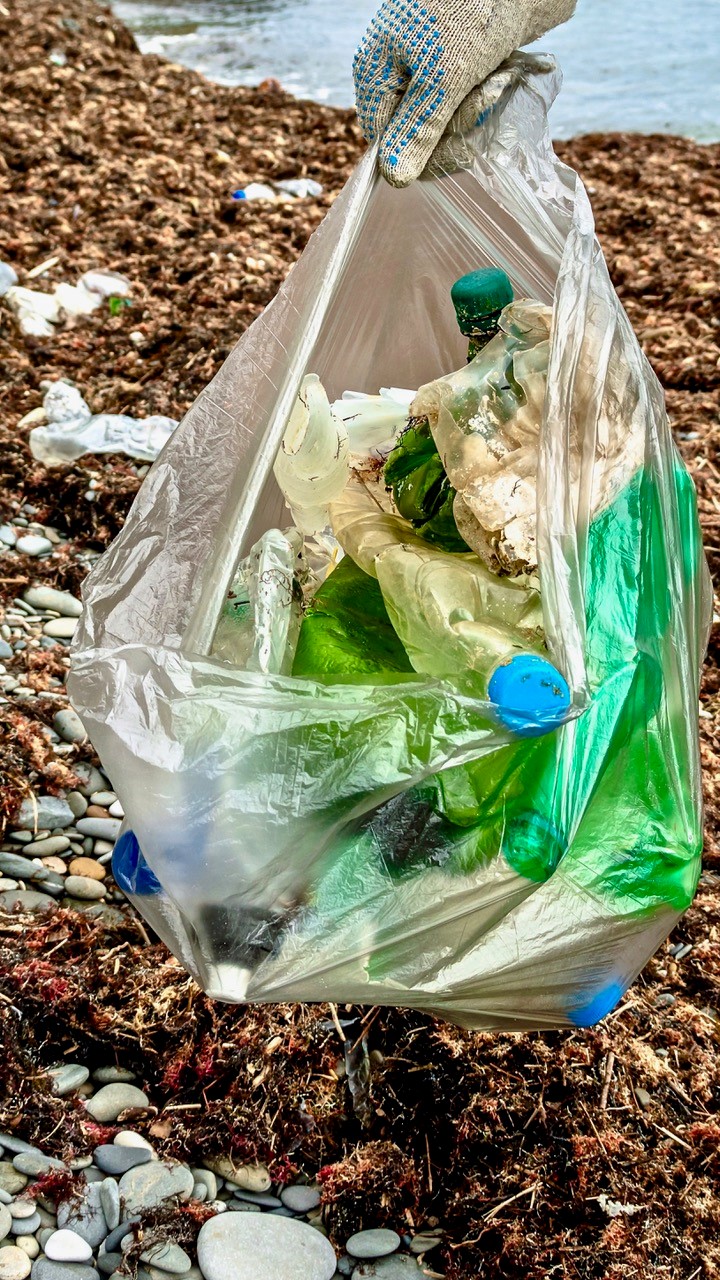Seaweed ticks every earth-friendly box: it’s natural, renewable and packed with growth-boosting nutrients – and bagging your own lets you give back to the planet in the process.
Facing into a howling gale, sand grains stinging your cheeks as you’re ducking spume, might not seem the obvious conditions in which to harvest a free and renewable resource that’ll supercharge soil and make your plants grow like billy-o.
But if you want to get your hands on a material that’s packed with all of the major, minor and micro nutrients that plants need, plus all-natural ‘plant growth stimulants’, there’s only one place to head for at this time of year: the beach. As soon as the first fierce storm has struck, I’m itching – repurposed compost bags in hand, and well wrapped up – to hit the shingle.
Collecting fresh seaweed is one of my enduring gardening joys. It fulfils perfectly that urge to forage, to gather, to never come home empty-handed. I can’t think of a more satisfying cargo to decant from the car boot than bags of fresh, life-giving seaweed headed straight for the garden (boot alert: if you’re collecting wet weed, make sure you sit your bags inside watertight containers, lest brine leaks from the bags).
As well as bringing home a multipurpose, all-round natural material that’ll boost your gardening efforts, you also – if only for a few weeks – get to close your eyes, sniff the air and imagine that your patch really is by the seaside.

My bags get filled with the loose or ‘drift’ seaweed that’s been torn from its underwater anchors by an angry sea. This is the fresh weed that lines up higher on the beach, along the strand line. I don’t cut seaweed from rocks – an activity requiring knowledge, and usually a licence/permit. I’m after the stuff that nature’s already ripped free for me, but I’m not greedy.
It’s unlikely that anyone is going to challenge you for taking a few bags of seaweed away for home use in your garden or allotment, but you’ll need to seek permission if it’s a private beach (search online for beach- or area-specific details). I harvest my weed from ‘tourist’ beaches, where I can get the car close for loading up.
Seaweed that washes up on our beaches is a habitat in its own right, and an important ecological player. It shelters invertebrates that birds seek out for winter food, and helps in the formation of sand dunes and in overall beach stability. But there’s generally enough to share with gardeners, especially in the wake of a power-packed storm, when great mounds of seaweed can accumulate, all ready for collection.
My technique is simple: I bag, walk on a bit, bag a bit more, and so on. That way I’m not clearing whole patches at once. Seaweeds attached to loose stones by a holdfast (these ‘macroalgae’ don’t have roots as we know them) are left alone. I wear waterproof gloves, and each handful gets a good shake to dislodge any critters back to the sand.
Shaking also reveals any hidden rubbish, especially plastic litter. If a quick scan of the shore looks like it’s heavy on plastic (anything from coffee cup lids to full-on fishing net), I’ll take a bag along just for litter, which is then deposited in a local waste bin – or often three, such is the sheer volume of our shore-polluting detritus. I like to think there’s a trade-off with nature here: I get to harvest something that helps in my garden and greenhouse and, in return, I help to clean up the mess we humans are making of our beautiful earth.
Shoreline litter-picks can easily become obsessional, once you know what to look for. They can also become soul-destroying when following a metres-long stretch of fishing line; if it’s black, and impossible to pick out among the greens and browns of the seaweed, it’s truly spirit-crushing.

Worse still is emerging scientific evidence that microplastics – those tiny, often unseeable fragments of plastic waste, including from fishing nets and ropes – can harm human cells when they’re ingested. ‘Bag and bin’ might seem futile amid a tsunami of plastic pollution (there are also plenty of disintegrating plastic plant pots washed up on beaches), but it’s the least I can do to give something back – to give thanks to the sea for her sacks of gardening bounty. And there’s no better way to spend a wild winter’s afternoon than getting sand-blasted.
Once the seaweed’s home, it’s all systems go. If the beach was especially heavy on plastic, I’ll do another shake-out on a sheet, to filter out elusive fragments (some always gets through, and you’ll be cursing when you spot bits of blue or orange fishing line in your nicely rotting weed). Seabird feathers rot down just fine.
Fresh weed can be used straight on the garden, or on soil beds under cover. It’s unlikely to be carrying enough salt to harm plants (the exception is dry weed collected from high on the shoreline, which is best avoided for garden use).
Seaweed makes a magical mulch; if it’s a dark border foil you are after, this is the mulch for you. A 2.5-5cm layer does the trick on my no-dig beds. I use it as a topping over a layer of garden compost and/or leaf mould, or bury it under green wood chips. A thick layer smothers green manures in no time.
Either way, it soon starts to break down into dark, spongy crumbs that worms drag down into the soil. In spring, on dry, sunny days, seaweed shrinks as it dries out, but don’t panic – it fills out again after rain. I find the best marine mulch-makers are bladderwrack, with its fern-like fronds dotted with air-filled ‘bladders’, and brown kelp (Laminaria spp.), but any seaweed combo does the trick.

Any pre-Christmas seaside hauls can be used as a mixer with autumn leaves. Seaweed left piled on its own (or kept in a bag for more than a week) soon turns into gelatinous, fetid goo, so blend it with something else; it can go straight into a general garden compost mash-up. Modest amounts added to a wormposting bin give the worms plenty to chew on.
As they grow, seaweeds absorb the carbon dioxide dissolved in our oceans, so adding seaweed to our soil or compost mixes means we can squirrel away some of that ‘blue carbon’, helping to cool climate chaos.
Dried seaweed keeps indefinitely. I always dry some in my greenhouse to use later. Once it is dry, I can turn it into big, multipurpose crumbs, either by filling a compost sack with dry weed and stomping on it, or by passing it through a shredder. Alert: triple-check first that no stones or shells, which can cause damage to a shredder, are attached to the weed.
The resulting crumbs can be spread over soil outdoors, used to rejuvenate overworked soil beds under cover, mixed with mulch, or used to enrich DIY peat-free sowing and potting mixes. In containers and hanging baskets, they’re a natural, compostable summer moisture-retainer that helps boost growth to boot.
I’m blessed in that I garden relatively close to the sea, and pass a beach, on a multipurpose journey, fairly often. If you’re far from the sea, it makes little sense to clock up road/gardening miles in search of fresh seaweed, but you can still tap into its potential. Crumbed, powdered and liquid seaweed products are easily available from retailers, both on the ground and online (check suppliers’ credentials to make sure their products are from a local, sustainable source). You won’t feel sand sting your cheeks, or get to purge a beach of plastic, but your plants will grow – like billy-o.
Time to grab some bags. There’s another storm coming in…
Text and images © John Walker. Beach image: Depositphotos
Find John on Twitter @earthFgardener


